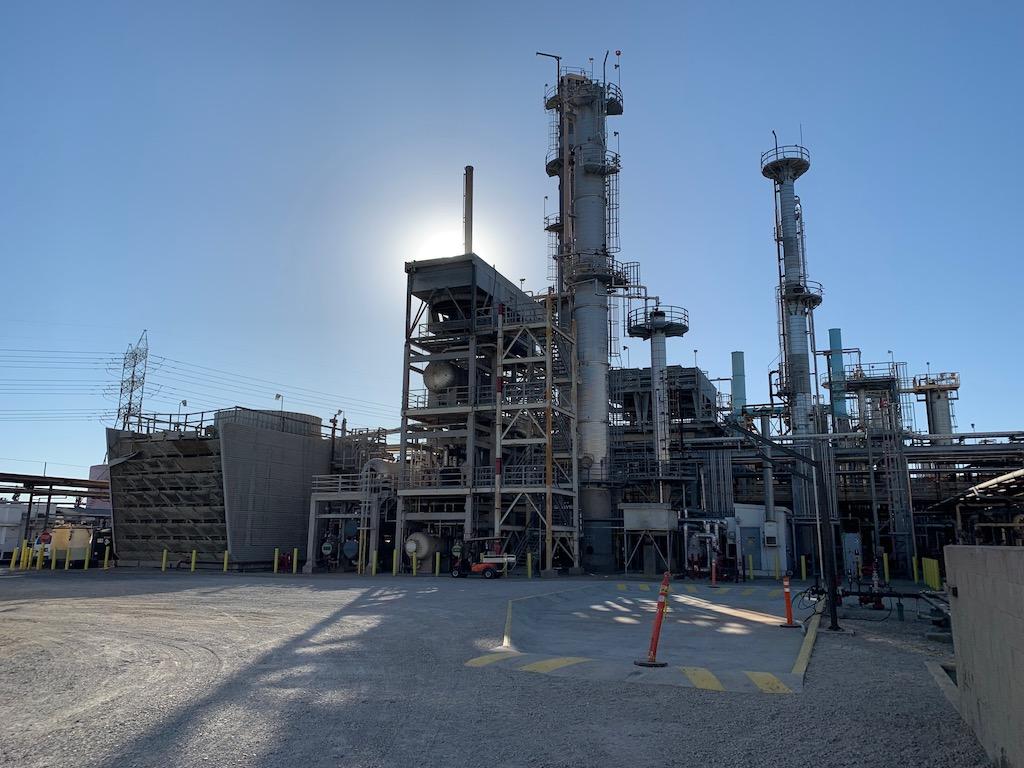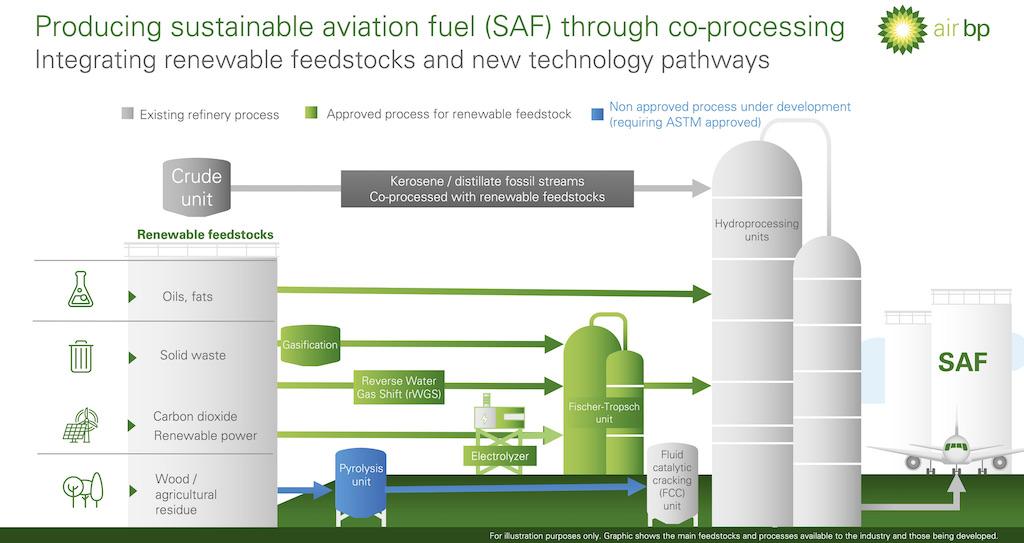
World Energy announced plans to increase SAF production at its Paramount, California, plant.
Tax incentives notwithstanding, business aviation inevitably will face competition from airlines for sustainable aviation fuel (SAF) production capacity. In April, for example, biofuel supplier World Energy announced plans to increase SAF production at its Paramount, California, facility by 700% to 340 million gal. annually. The company also said that it is pre-selling future capacity at Paramount, naming Amazon Air, United Airlines, JetBlue, Rolls-Royce and Boeing as customers.
Competition also looms from other industries for renewable feedstocks used in making SAF, which are not inexhaustible, as Alder Fuels’ Bryan Sherbacow notes. Associations representing fuel retailers and trucking interests opposed passage of the Blenders Tax Credit; they argued that incentivizing SAF production will increase competition for renewable feedstocks and undercut production of renewable diesel and biodiesel.
SAF contains the same hydrocarbons as conventional jet fuel but derives its hydrocarbons from more sustainable sources instead of extracting fossil-based fuel from the ground, resulting in a net reduction of emissions when compared to fossil fuel on a lifecycle basis. The current generation of SAF is HEFA-based, the acronym for Hydroprocessed Esters and Fatty Acids. It sources hydrocarbons from waste cooking oils, fats and grease.
The sustainable fuel is certified to the ASTM D7566 specification for aviation turbine fuel containing synthesized hydrocarbons, which approves SAF for use in up to 50% blends with conventional jet fuel. Upon release from blending, the fuel is certified to ASTM D1655, the specification for conventional Jet A/A-1.
Sustainably sourced fuel still must be blended with fossil-based fuel due to a lack of aromatics in SAF needed for seal compatibility in some aircraft engines. Newer engines are being developed to burn 100% SAF.
Co-Processing With Crude

British energy giant BP contends that producing SAF through co-processing at existing refineries will help aviation transition to a low-carbon future until standalone facilities producing 100% renewable SAF to ASTM D7566 specification pick up the slack. Existing refineries now can be used to co-process 5% of approved renewable feedstocks alongside crude oil streams to meet ASTM’s D1655 standard for blended fuel, a ratio BP hopes to increase to 30%. The company’s refinery in Lingen, Germany, is already producing SAF through co-processing.
“The advantage of co-processing is that it doesn’t require the significant financial investment and time that comes with building a new standalone facility,” writes Andreea Moyes, Air BP global head of sustainability, in an October opinion piece released to the press. “Also, these facilities potentially have greater flexibility in feedstocks for the coming years of energy transition, being able to switch between co-processing and the traditional processing of crude oil to meet fluctuations in demand. There are currently around 600 refineries in the world. That’s a huge manufacturing resource in terms of the opportunity to help production today.”
Formed in 2019, Alder Fuels uses sustainable biomass sourced from regenerative grasses, forest residues and agricultural waste to produce Alder Greencrude (AGC), a lower-carbon crude product that can be converted into SAF using the existing biomass and petroleum refinery infrastructure. At NBAA-BACE, Alder and engine manufacturer Rolls-Royce announced a partnership to assess the performance of AGC-derived SAF, a product that Alder calls “SAF 2.0.”
Engine testing will validate the performance of Alder’s SAF 2.0 as a drop-in replacement for conventional jet fuel and generate data for the development of a 100% SAF specification by standards organization ASTM, which currently prescribes fuel blends containing up to 50% SAF. Rolls-Royce already has flown its Trent and Trent XWB airliner engines on 100% SAF and has started testing its Pearl engine line for business aviation in Dahlewitz, Germany.
The engine testing to date has used HEFA-based SAF, which is now considered SAF 1.0.
“We are collaborating [with Rolls] on SAF 2.0 and we are taking our fuel through the ASTM approval process,” says Sherbacow. “Critically, Rolls is helping us generate the data that will be submitted through that process. While we have the technology and the capability of producing the fuel and the data about the carbon intensity of producing the fuel, we don’t have turbines, the capability to do the fuel performance or emissions testing in a turbine. That’s why these partnerships are so valuable and critical.”
World Energy plans to expand the types of renewable feedstocks it uses to produce SAF with the expectation that increasing demand for waste oils, fats and greases will drive up prices.
“When we’re finished with this, we’ll be able to [use] absolutely every feedstock under the sun,” CEO Gene Gebolys declared at the Paramount ribbon-cutting event in April. “We are continuing to work on new feedstocks, and we’ll source everything we could possibly source.”
SAF Must Be Scaled To Meet ‘Net-Zero’ Pledge, Part 1: https://aviationweek.com/business-aviation/airports-fbos-suppliers/saf-…
SAF Must Be Scaled To Meet ‘Net-Zero’ Pledge, Part 2: https://aviationweek.com/business-aviation/saf-must-be-scaled-meet-net-…





